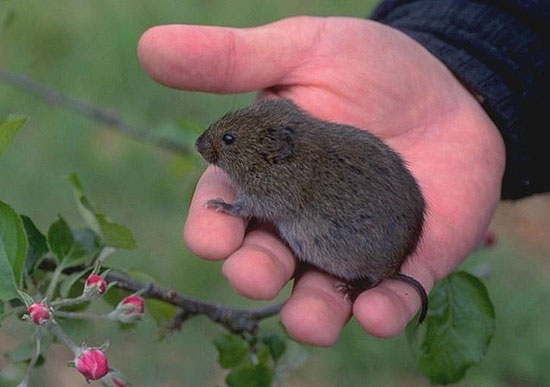Protect Your Yard: Effective Vole Control Techniques
Protect Your Yard: Effective Vole Control Techniques
Blog Article
Comprehensive Overview to Reliable Vole Insect Control: Infestation Identification and Treatment Techniques
In the world of effective pest control, vole invasions present an one-of-a-kind obstacle that requires a tactical method. These small rodents, typically mistaken for computer mice, can unleash chaos on gardens, yards, and crops if left unchecked. Identifying the indications of vole presence and carrying out targeted therapy approaches are necessary components of an effective pest monitoring plan. By discovering the nuances of vole habits, understanding crucial indicators of problem, and evaluating an array of control choices, one can establish a thorough approach to deal with these evasive bugs.
Understanding Vole Habits
Vole habits is defined by their tunneling routines and quick recreation rates, making them a tough insect to regulate efficiently. These tiny rats typically create detailed passage systems underground, using them for sanctuary, food storage, and transportation. Voles are herbivores, eating a variety of plants, bulbs, turfs, and origins, which can cause considerable damages to yards, orchards, and grass. Their rapid reproductive rate further complicates control initiatives, with females qualified of producing multiple litters in a solitary year, each having a number of offspring.
Voles are most active during the early morning and evening hours, investing the bulk of their time foraging for food. Their tunneling behaviors not just disrupt gardens and grass but also make them testing to find and remove. Comprehending vole actions is essential for effective insect control approaches. By identifying their burrow places, monitoring feeding areas, and applying targeted control methods, such as trapping or habitat alteration, vole infestations can be managed successfully.
Signs of Vole Invasion

Prevention Techniques
Implementing efficient avoidance strategies is crucial in reducing vole invasions and safeguarding plants from their damaging feeding behaviors (vole lawn damage). To avoid vole invasions, it is necessary to begin by removing possible food resources and sanctuary. Keep yard and plant life cut short, remove weeds and particles, and preserve More Help a clean yard or lawn to make the area less eye-catching to voles. Mounting obstacles such as hardware cloth or underground fence can likewise aid deter voles from entering specific areas. Furthermore, lowering excess dampness by repairing leaky pipelines and ensuring proper drain can make the environment much less friendly for voles.
Consistently examining the property for signs of vole activity, such as runways and tunnel openings, is essential for very early discovery and punctual action. If vole activity is thought, think about using traps or repellents purposefully put near their pathways.
Non-Lethal Control Methods
To effectively handle vole populaces while prioritizing humane approaches, non-lethal control methods provide practical options for decreasing vole damage in gardens and landscapes. One efficient technique Extra resources is making use of physical obstacles such as equipment towel or wire mesh to safeguard vulnerable plants. These obstacles can be buried at the very least 12 inches bent and deep at a 90-degree angle to stop voles from burrowing beneath. In addition, habitat adjustment can deter voles by decreasing their favored food sources and hiding places. Keeping a well-mowed yard, eliminating debris, and maintaining plant life cut can make the atmosphere much less attractive to voles.

Lethal Control Options
One reliable method for attending to vole infestations in gardens and landscapes entails the calculated use lethal control alternatives. When faced with a serious vole invasion that non-lethal techniques have actually fallen short to contain, applying dangerous control measures comes to be vital. One generally utilized lethal control option is using snap traps. These traps are developed to quickly and humanely eliminate voles upon activation, making them a prominent option for lots of gardeners and landscaping companies. To raise the performance of snap catches, it is advised to place them in areas where vole task is high, such as along runways or near burrow entrances. Another dangerous control alternative is the use of harmful baits specifically created to target voles. why not find out more These lures include toxin that is consumed by the voles, bring about their ultimate demise. Care must be worked out when using hazardous lures to avoid injury to non-target animals or pet dogs. Overall, when employing dangerous control alternatives, it is vital to do so responsibly and in accordance with regional guidelines to effectively take care of vole problems.
Final Thought
Finally, efficient vole bug control requires a thorough understanding of vole behavior, identification of indicators of problem, execution of prevention techniques, and application of both non-lethal and deadly control methods. By integrating these approaches, people can effectively take care of vole populations and shield their residential or commercial property from damage. It is necessary to deal with vole problems quickly to avoid more issues and reduce the influence on the surrounding environment.
Offered the complex passage systems and fast recreation rates particular of voles, acknowledging the indications of vole infestation comes to be essential in effective insect control. One of the primary signs of vole presence is the visibility of surface area paths or tracks in turf or snow, commonly regarding 1-2 inches vast, created as voles take a trip in between their burrows and food resources.To efficiently take care of vole populaces while focusing on gentle techniques, non-lethal control methods supply useful options for lowering vole damage in landscapes and gardens.One reliable method for addressing vole problems in landscapes and yards entails the strategic usage of lethal control choices. vole lawn damage.In conclusion, effective vole insect control needs a comprehensive understanding of vole actions, recognition of indicators of invasion, execution of prevention methods, and utilization of both non-lethal and dangerous control methods
Report this page